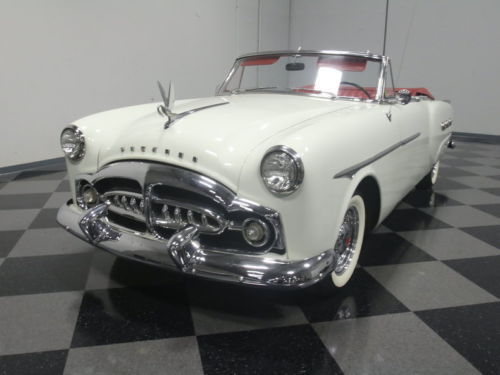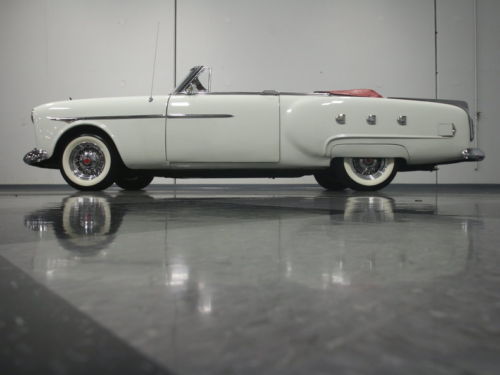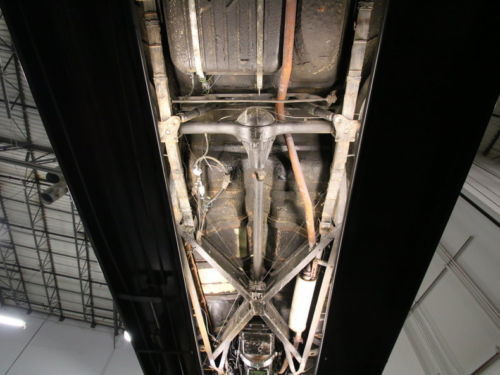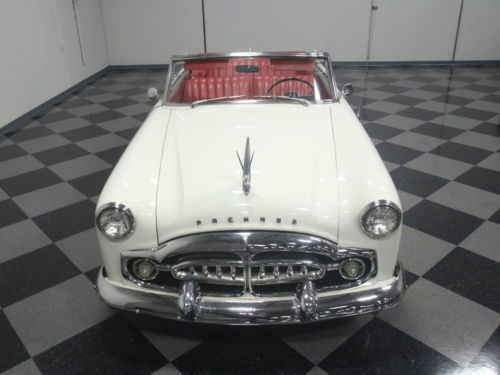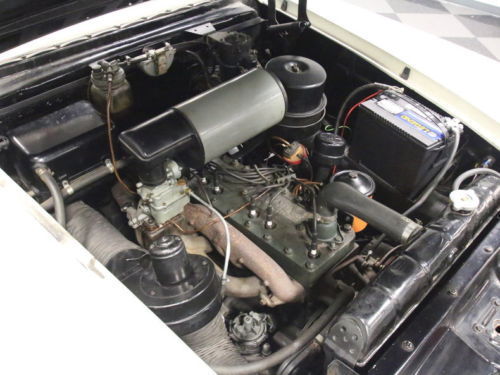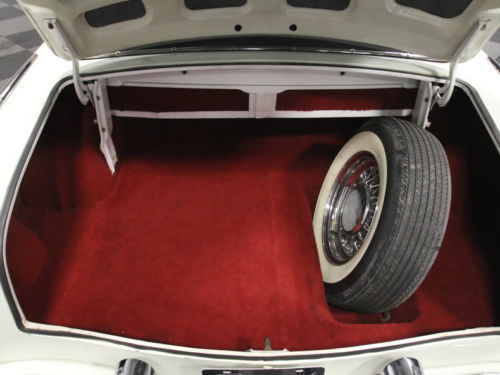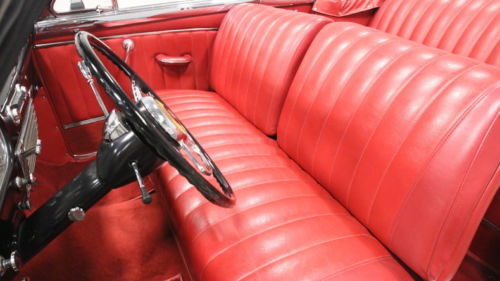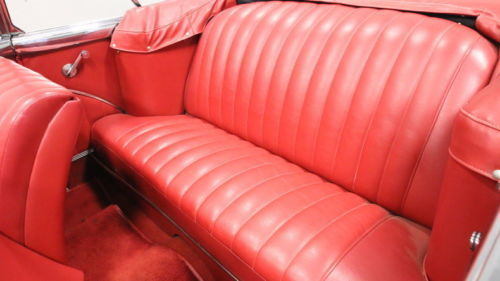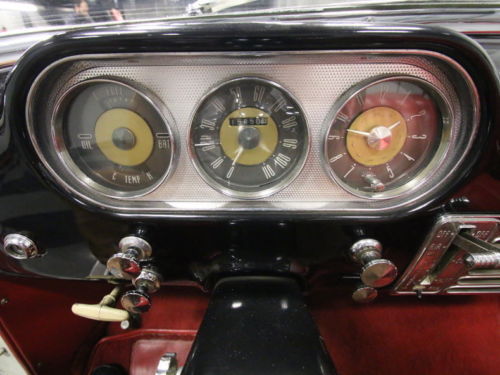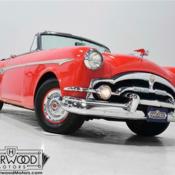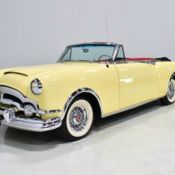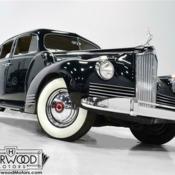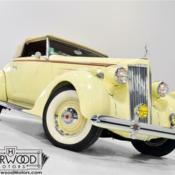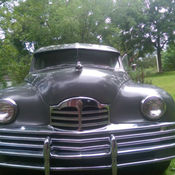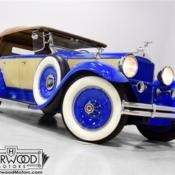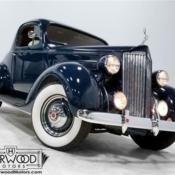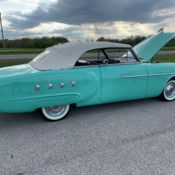Packard 1951, 250 convertible with 327 cubic inch, straight -8
| Condition: | Used |
| Make: | Packard |
| Model: | 250 |
| SubModel: | 250 |
| Type: | Convertible |
| Trim: | chrome |
| Year: | 1951 |
| Mileage: | 15,820 |
| VIN: | 24693I43 |
| Color: | factory white |
| Engine: | 327 cubic inch, straight -8 |
| Cylinders: | 8 |
| Fuel: | Gasoline |
| Transmission: | Automatic |
| Drive type: | RWD |
| Interior color: | red |
| Vehicle Title: | Clear |
| Item location: | Decatur, Georgia, United States |
| Extras |
|
Convertible |
| Listed by | Private seller |
Description of 1951 Packard 250 chrome |
|
RARE PACKARD DROP-TOP, 327 STRAIGHT 8, AUTO, COLLECTOR OWNED, TURN-KEY 250!! This is my 1951 Packard in great shape and being offered for auction, this car has been stored inside and runs and drives great. I tried to put as much information as i could below. The paint is not perfect, there are a couple of imperfections, the chrome is immaculate, the driver side door needs a little love with some panel alignment.I will try to post video here soon. The odometer says 15,800 this can not be confirmed. YouTube Video will open in a new window YouTube Video will open in a new window Please email me with any questions. Buyer is responsible for pickup and or delivery cost. Pay with cashiers check or certified cashiers check Legendary Packard prestige and luxury made affordable was the 250's mission in 1951, and as this elegant, sporting convertible demonstrates, it's just as true today. Only 2572 Series 250 convertibles were built in 1951, making this a rare car with legendary straight-8 power and undeniable Packard presence. The all-new 250 was designed to be a low-cost Packard, but everything's relative, as it still cost as much as a Cadillac in 1951. The styling was conservative as ever, but with a handsome, rounded look that would serve until 1956 when Packard merged with Studebaker in a last attempt to stay alive. Wearing period-appropriate white paint, this handsome convertible has a look that commands attention beyond your average Fords and Chevys and when parked next to a comparable Cadillac of the period, you can see where the money was spent. Bodywork is quite good, with straight bodywork and good panel alignment, suggesting that this car, like most Packards, lived an easy life with people who loved it. The finish is older and perhaps showing a few signs of age, but like a movie star who is aging gracefully, it would be an insult to try to make it better. Instead, it has a wonderful all-of-a-piece look and feel, from the traditional Packard grille up front to the optional chrome "fins" on the rear fenders. The interior isn't entirely authentic, but they did work to get the look right using a combination of pleats and flat panels, and the upholstery is quite comfortable when the sun is overhead. Matching red door panels were created at the same time, and there's plenty of bright trim to make the Packard feel special inside. A big steering wheel frames three gauges with all the vitals and simple two-tone faces, as was the fashion in the early '50s. The shifter controls Packard's "Ultramatic" automatic transmission and operation feels quite modern, so getting this one out on the road is easy even for first-timers. The center stack houses the AM radio (not operational, which isn't surprising) and heater controls, proving that nothing much has changed in the past six decades. The upholstery is in very good condition with minimal wear, the carpets look quite good, and like the exterior, everything looks about the same age and condition so it's quite a pleasant place to spend some time. The black canvas convertible top is a new replacement unit, and it folds easily and seals up well enough to make this a no-fear car on tour. And there's a giant trunk that's as neatly finished as the interior and it includes a full-sized spare on a matching wire wheel. Packard's bulletproof 327 cubic inch straight-8 is as smooth and torquey here as you'd expect. Thanks to a freshly rebuilt carburetor and tune-up, it starts with a muscular 8-cylinder burble and moves the car with an uncanny ease. The engine bay was obviously well-detailed when it was restored and shows signs of use today, but all of the original equipment is intact, from the oil bath air cleaner to the accessory orange oil filter canister on the side of the block. The Ultramatic automatic transmission shifts almost imperceptibly and this car gathers momentum so easily that you'll often find yourself going 10 MPH faster than you thought. The underside is clean with no signs that this car ever lived in the rust belt, and it appears to have a recent reproduction exhaust system that sounds right. Flashy wide whitewall radials on gorgeous chrome wire wheels add an expensive upscale look that suits this Packard just fine. Hailing from the Truett Cathy collection, this pretty Packard offers performance and style in equal measure. Please feel free to email me with any questions or to arrange to see the car. Here is a little more history on the 1951 Packard. The Packard 250 was an automobile model produced by the Packard Motor Car Company of Detroit, Michigan during model year 1951. Models in the 250 designation represented Packards shorter wheelbase, and 327 cubic inches (5.4 L) 8-cylinder in-line engine. The 1951 Packard 250 was introduced on August 24, 1950, taking the place of the Packard Standard models which were eliminated for the 1951 model year. The 200 debuted as part of the fully redesigned Packard line, attributed to John Reinhart. Replacing the bulbous 1948-1950 Packards in the 22nd and 23rd Packard Series, Reinhart's "High Pockets" design was more formal than its predecessor, and would serve Packard until the end of the 1956 model year when true Packard production ceased. The 250 was considered a "junior" series car, and were separated from the Packard 300 and Packard Patrician 400 models by their shorter wheelbases (122 in or 3,100 mm versus 127 in or 3,230 mm) and lesser trim appointments. Packard 250 standard models were available as a two door convertible and only 2572 were made. While similar in appearance to the senior cars, the junior Packard lacked the noted Packard cormorant hood ornament and had vertical tail lights instead of the horizontal units on the senior models. The junior models also lacked the wrap-around rear window feature found on senior Packard sedan models. The 250 model range was introduced in March 1951, and was specially designed to fill the vacuum of Packard having neither a hardtop or convertible in its 1951 model range. Besides their unique body styles, 250's received three jet-louvers on each rear-quarterpanel. Better grade trim and fabric were used within. 1952 Packard 250 Convertible All Packard 200 models came with twin horns, two sun visors, front and rear bumper guards, spare tire and jack set. Deluxe trim level included the spartan appointments found on the standard models, and added chrome wheel rings, and turn indications as standard. White-wall tires and full-wheel covers were also extra. Items which have since become standard to the auto industry since the late 1960s such as heater, radio, tinted glass, carpeting, etc., were all optional on the Packard, as well as other premium cars during that era. Packard also became the first car-maker to offer power-brakes in 1951. “Easamatic” as they were trademarked, were a product of Bendix and an exclusive to Packard. Changes for 1952 were minimal, and centered on the requisite annual trim updates. Packard did drop the Business Coupé, a move that other U.S. automakers were also making at the same time. |
 Home
Home Contact us
Contact us NEWEST CARS
NEWEST CARS SELL YOUR CAR
SELL YOUR CAR FAQ
FAQ